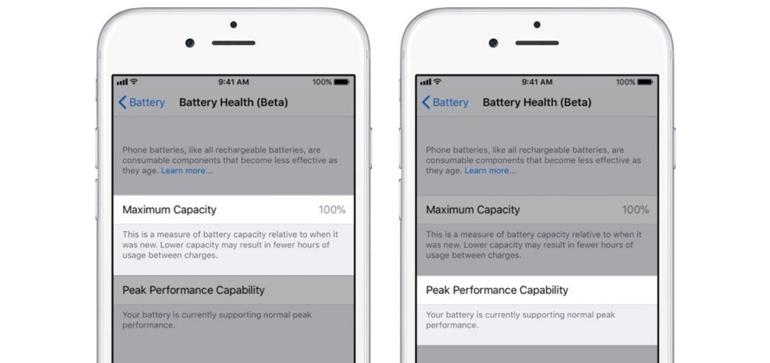
Is your iPhone running slow? Is it being throttled by iOS to prevent it from crashing? Would a new battery help restore it to peak performance? Here’s how you can use iOS to find out.
Must read: iOS 11 is such a mess, Apple showcased a bug in latest iPhone X ad
In December of 2017 an age-old conspiracy theory that Apple deliberately slows down older devices was proved true when it came to light that Apple has included code in the iOS operating system that throttles the performance of iPhones if the battery is showing signs of wear. Now on the plus side, Apple will carry out a battery swap for $29, but up until now it’s been tricky for iPhone owners to know whether this would make a different.
According to Apple, the iPhone’s battery is designed to retain up to 80 percent of its original capacity at 500 complete charge cycles, so if the full charge capacity is less than 80 percent of the design capacity, of the recharge cycles exceed 500, then your battery is considered worn. Problem is, Apple hasn’t made any of this information available to the end user. Unless you’ve been meticulous about keeping battery recharge records — and who has time for that? — then you’ve probably no clue how many times you’ve recharged your iPhone.
But iOS 11.3 changes that.
To find out how your battery is coping with the demands being placed on it, first download and install the newly released iOS 11.3 update onto your iPhone.
Also: iOS 11.3: Get your iPhone and iPad ready for the biggest update yet
Once that’s finished installing, head over to Settings > Battery. There you will see a new option labeled Battery Health (Beta). Click on this to find out more about your battery.
Note that this feature applies only to the iPhone 6, iPhone 6 Plus, iPhone 6s, iPhone 6s Plus, iPhone SE, iPhone 7, and iPhone 7 Plus.
If you see this, your battery is OK and you’re good to go:

What you’ll see if your battery is OK
If your battery is worn out and in need of replacing, this is what you’ll see:

What you’ll see if your battery is worn
If the battery is worn you will be offered the ability to disable performance throttling, as well as get information on how to get the battery replaced. Note that if the iPhone experiences an unexpected shutdown as a result of battery performance, power management will be turned back on.
Another way to tell if your battery is worn is if your iPhone restarts and you see a notification when it reboots that says This iPhone has experienced an unexpected shutdown. Following a crash like this iOS will automatically enable performance throttling.
Are there any side effects to disabling performance throttling? Other than increasing the risk that your device will shutdown unexpectedly, no. In fact, if your iPhone has only crashed the once, disabling performance throttling might buy you extra days, weeks, or possibly months.
Or it might crash within moments!
If your iPhone has crashed, and you do decide to turn off performance throttling, here are some tips to help minimize future crashing:
- Try not to expose your iPhone to extremes of heat or cold, since both put a lot of stress on your battery, making it much more likely to shut down unexpectedly
- Turning down the screen brightness seems to help, because the display is a big battery hog, and turning it down frees up some additional power
- Some apps might be more power-hungry than others and more likely to cause crashing, so you might need to avoid using them until you get your battery replaced
See also:

